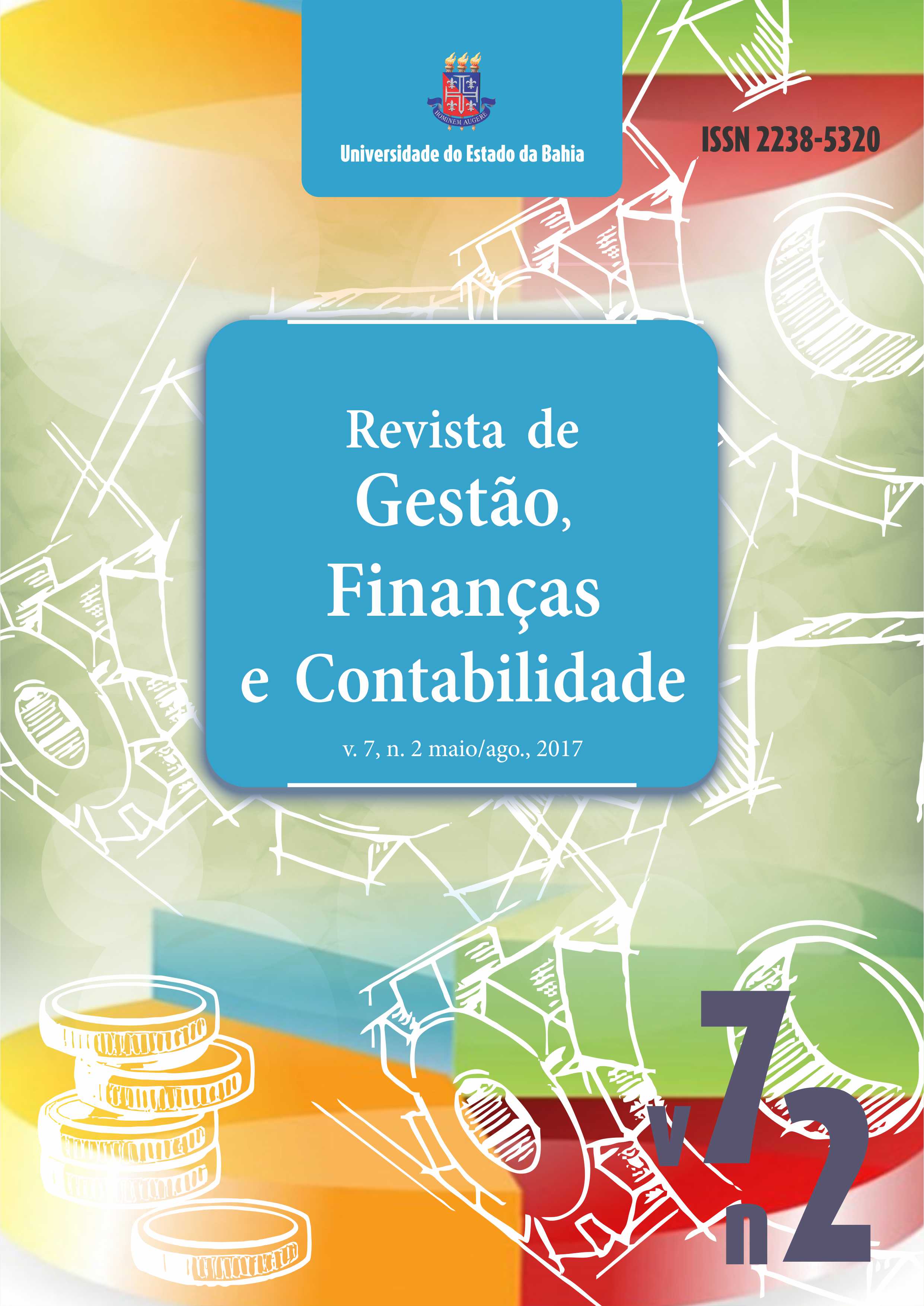STUDY OF THE BEHAVIOR OF THE DEBT OF COMPANY CELULOSE IRANI S.A.: TEMPORAL STUDY 2005-2015
DOI:
https://doi.org/10.18028/rgfc.v7i2.2910Palabras clave:
Indebtedness. Analysis of balance sheets. Financial Leverage. Financial management.Resumen
This article proposes to analyze the debt behavior of the company Cellulose Irani S.A., belonging to the paper and pulp segment of the listed companies listed on BM &F Bovespa. This analysis was delimited for the period 2005 - 2015 and was based on the study of the indicators of participation of third parties, the level of indebtedness, composition of indebtedness, financial leverage and profitability. The general objective was to identify the main indicators of indebtedness and its behavior in the period 2005 - 2015 in the company Cellulose Irani S.A. Specifically, it proposes to calculate the classical debt indicators of the analysis of balance sheets; identify possible behaviors in such indicators and their influence on the financial structure of the company; to correlate total debt volume and net income to assess dependency among such financial aggregates. The relevance of debt management and how it impacts the survival of the company is at the heart of this article. The indebtedness study contributes to a more effective management of the organization, aiming at the reduction of financial risk and the continuity of operations. The methodology used involved the collection of the data directly from the publications on the BM & F Bovespa website, tabulating them and calculating the indicators, their presentation by means of charts and their subsequent analysis. In addition, such a study serves as a model for application in other companies, and even as a suggestion the application of such analyzes in specific segments. The main contribution of this article is to identify the management situation based on financial indicators, an issue that takes center stage in the modern organizational strategy. In general terms, it was observed that the company studied presented a certain irregularity in the values of the indicators, showing a certain level of improvement in the last periods, as well as a positive correlation between the total level of indebtedness (current and long-term liabilities) and the net profit, as well as a positive leverage, since third-party capital is positively contributing to the formation of return on capital invested, but with a significant increase in financial risk.
Descargas
Citas
ASSAF NETO, Alexandre. Structure and analysis of balance sheets: an economic-financial approach. 9.ed. São Paulo: Atlas, 2010
CASTRO, Cláudio de Moura. The practice of research. São Paulo: McGraw-Hill, 1997.
GIL, Antônio Carlos. Methods and techniques of social research. 5. ed. São Paulo: Atlas, 1999
GITMAN, Lawrence J. Principles of administration Financial management. 7.ed. São Paulo: Harbra, 2002.
GROPELLI, A.A.; NIKBAKHT, Ehsan. Finance management. 3.ed. São Paulo: Saraiva, 2010.
MATARAZZO, Dante Carmine. Financial analysis of balance sheets. 8.ed. São Paulo: Atlas, 2010.
OLIVEIRA, Silvio Luiz de. Treaty of methodology: Research projects, TGI, CBT, monographs, dissertations and theses. 2. ed. Sao Paulo: Pioneira Thomson Learning, 2002.
TRIVIÑOS, Augusto N.S. Introduction to research in social sciences: The qualitative research in education. São Paulo: Atlas, 1987
Descargas
Publicado
Número
Sección
Licencia
Autores que publicam na RGFC concordam com os seguintes termos:
- Autores mantém os direitos autorais e concedem à revista o direito de primeira publicação, com o trabalho simultaneamente licenciado sob a Creative Commons Attribution License (https://creativecommons.org/licenses/by-nc/4.0/), permitindo o compartilhamento do trabalho com reconhecimento da autoria do trabalho e publicação inicial nesta revista;
- Autores têm autorização para assumir contratos adicionais separadamente, para distribuição não-exclusiva da versão do trabalho publicada nesta revista (ex.: publicar em repositório institucional ou como capítulo de livro), com reconhecimento de autoria e publicação inicial nesta revista;
- Autores têm permissão e são estimulados a publicar e distribuir seu trabalho online (ex.: em repositórios institucionais ou na sua página pessoal), já que isso pode gerar alterações produtivas, bem como aumentar o impacto e a citação do trabalho publicado. Porém deve-se observar que uma vez aprovado pelos avaliadores, o manuscrito não poderá sofrer mais alterações. Caso o autor deseje fazê-lo, deverá reiniciar o processo de submissão.




